Archaeologist points to hidden monument in Jordan's Petra (Update)
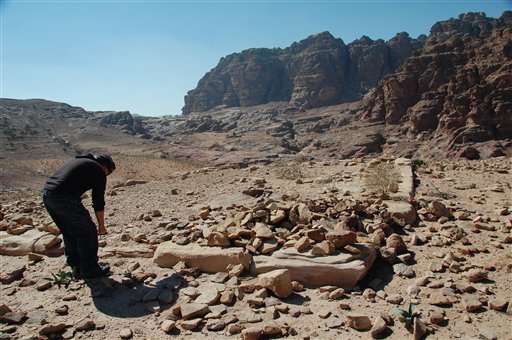
Satellite and drone images have led to a new discovery in the ancient city of Petra—a massive man-made stone platform hidden under sand.
The platform might have been used for ceremonial purposes because it was fronted on one side by columns and a monumental staircase, said Christopher A. Tuttle, executive director of the Council of American Overseas Research Centers. Only excavations would be able to shed more light on its original use, but no digs are planned for now, he said.
Petra is a sprawling archaeological site of tombs and monuments carved into rose-hued desert sandstone some 2,000 years ago by traders known as Nabataeans. Petra's most famous building is the Treasury, where scenes from "Indiana Jones and the Last Crusade" were filmed in the 1980s.
Scientific exploration of Petra goes back some 200 years, and Tuttle worked at the site for close to a decade.
The platform is located about 900 meters (3,000 feet) from the ancient city center, but away from paths used by tourists and away from major monuments, Tuttle said late Friday. It is not clearly visible from the ground or nearby hills, and its outlines only emerged in satellite and drone images, he said.
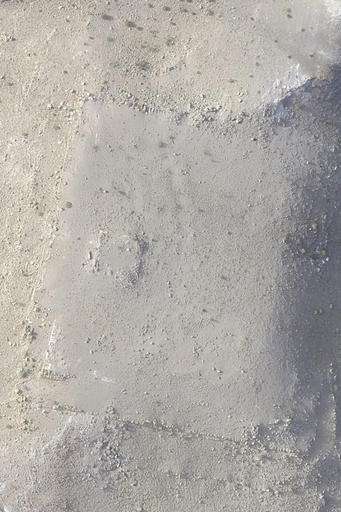
"It's this very large platform that many of us (archaeologists) have walked over for years, and probably didn't even realize we were walking on it," said the archaeologist, who collaborated with Sarah Parcak from the University of Alabama at Birmingham. Tuttle led four ground surveys while Parcak analyzed satellite data.
The platform was constructed by leveling a natural plateau, according to the pair's findings, published last month in the Bulletin of American Schools of Oriental Research. It measures about 56 meters (184 feet) by 49 meters (161 feet), or about the size of six professional basketball courts.
A second, slightly smaller platform was built on the first and was paved with flagstones, some of them exposed by erosion, the report said. The remnants of a small structure, including a doorstep, are visible on the smaller platform.
The east side of the smaller platform was originally lined by a row of columns that was partially revealed by illegal excavations, the researchers wrote. The columns "crowned a monumental stairway that spanned the entire width of the smaller platform," they wrote. Some of the treads of the staircase were found further down a slope.
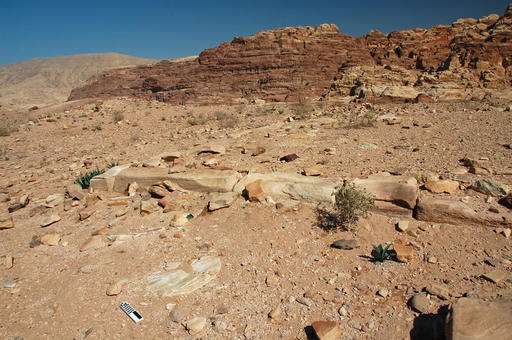
Tuttle's team discovered surface pottery at the site, some of it going back to the Nabataeans' peak era of more than two millennia ago, but some of it much newer.
"It appears highly likely that the platform and structures were initially constructed to serve ceremonial purposes," the researchers wrote.
Vast areas of Petra have not been uncovered, but the platform appears unusual among the city's monuments.
Tuttle said there are no plans to lay bare the entire platform.
"The moment you uncover something, it starts to disintegrate, and that's Petra's No. 1 problem," he said. "The (sandstone) monuments are disintegrating ....from exposure to the wind, the rain, the sun. So what we would do if we did go back there is targeted excavations."
-
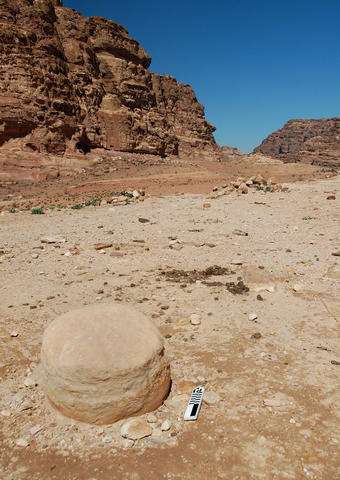
This undated handout image, provided by Dr. Christopher A. Tuttle, Executive Director of the Council of American Overseas Research Centers, shows a sandstone column drum, part of a platform hidden under the sand in Petra, Jordan.Tuttle said satellite and drone images led to a new discovery in the ancient city of Petra in southern Jordan—a massive platform hidden under sand. Tuttle said late Friday, June 10, 2016 that the platform was not clearly visible from the ground, and that only images taken from above it revealed the shape. He said it may have been used for ceremonial purposes because it was fronted on one side by columns and a monumental staircase. (Council of American Overseas Research Centers/C. A. Tuttle via AP) -
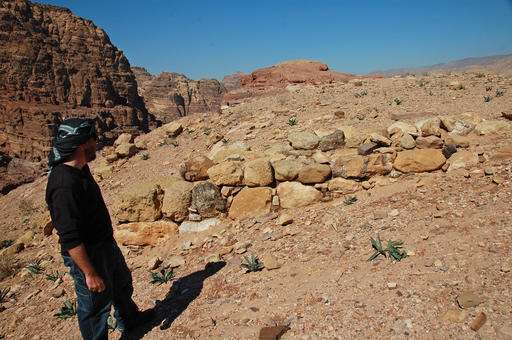
This undated handout image, provided by Dr. Christopher A. Tuttle, Executive Director of the Council of American Overseas Research Centers, shows Dr. Christopher A. Tuttle standing at the southwest corner of the interior, smaller platform, looking north, in Petra, Jordan. Tuttle said satellite and drone images led to a new discovery in the ancient city of Petra in southern Jordan—a massive platform hidden under sand. Tuttle said late Friday, June 10, 2016 that the platform was not clearly visible from the ground, and that only images taken from above it revealed the shape. He said it may have been used for ceremonial purposes because it was fronted on one side by columns and a monumental staircase. (Council of American Overseas Research Centers/ Q. Tweissi via AP)
© 2016 The Associated Press. All rights reserved.












.jpg)






